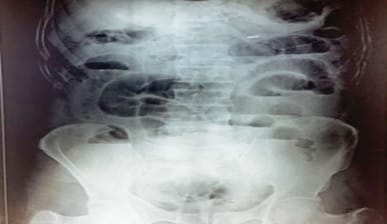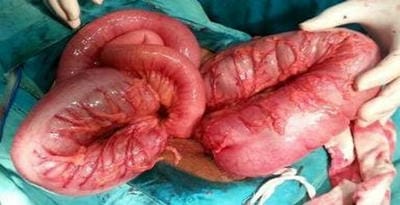Study of clinical presentation and management of intestinal obstruction and its evaluation with respect to morbidity and mortality
Nutan K.1*, Charokar K.2, Bharang K.3
DOI: https://doi.org/10.17511/ijoso.2020.i03.05
1* Kumari Nutan, PG Resident, Peoples College of Medical Sciences and Research Centre, Bhopal, Madhya Pradesh, India.
2 Kailash Charokar, Associate Professor, Department of Surgery, Peoples College of Medical Sciences and Research Centre, Bhopal, Madhya Pradesh, India. https://orcid.org/0000-0002-0540-6726
3 Krishna Bharang, Associate Professor, Department of Surgery, Peoples College of Medical Sciences and Research Centre, Bhopal, Madhya Pradesh, India.
Introduction: Intestinal obstruction is one of the common surgical emergencies. Often the patients presenting with intestinal obstruction may be extremely ill and require prompt evaluation and definitive treatment. Aim: The aim of this study was to evaluate the clinical pattern and surgical management outcome of Intestinal Obstruction.Material and Methods: This prospective descriptive study was conducted at Peoples College of Medical Sciences and Research Centre and Hospital during the period from December 2017 to April 2019. The patients presenting with clinical features of acute intestinal obstruction were included in the study after their informed consent. Patients below the age of 14 years were excluded. A predesigned and validated proforma was used to record data. Results: A total of 50 patients were included in the study.The mean age of patients was 35.85±10.99 years. The pattern of intestinal obstruction observed in patients was small bowel obstruction, followed by a large bowel obstruction, and the remaining with features of both. The common causes of intestinal obstruction were adhesion and bands, followed by tuberculosis. Adhesiolysis and release of bands were performed in 41%, resection, and anastomosis in 49%. Wound infection was the most common complication observed. A mortality rate of 4% was observed. Conclusion: Small bowel obstruction was the common type of intestinal obstruction. Prompt diagnosis and early surgical treatment after resuscitation is key to favourable treatment outcomes.
Keywords: Intestinal obstruction, Adhesions, Stricture, Emergency laparotomy, Resection-anastomosis
| Corresponding Author | How to Cite this Article | To Browse |
|---|---|---|
| , PG Resident, Peoples College of Medical Sciences and Research Centre, Bhopal, Madhya Pradesh, India. Email: |
Kumari N, Charokar K, Bharang K. Study of clinical presentation and management of intestinal obstruction and its evaluation with respect to morbidity and mortality. Surgical Review Int J Surg Trauma Orthoped. 2020;6(3):166-172. Available From https://surgical.medresearch.in/index.php/ijoso/article/view/188 |


 ©
© 

